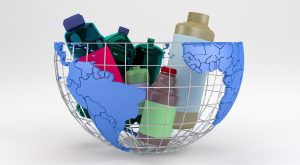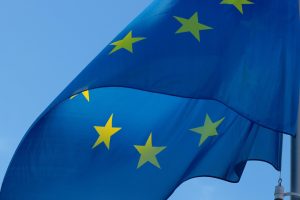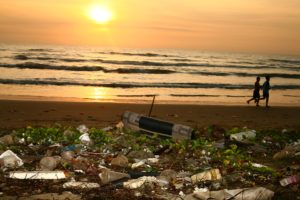One of the objectives marked in red by the European Union (EU) for some years now is the commitment to the circular economy. It is estimated that, in countries like Spain, around half of the waste generated at home ends up in a landfill. The community institutions intend to ensure that these and other wastes carry out a circular process, so that they can become raw material so that, in the future, they can manufacture new products or transform them into energy that nourishes the activity of some industries.
Recent steps to achieve these milestones seem promising. The European Union has set ambitious targets for the recycling and reuse of plastic packaging of 50% in 2025 and 55% in 2030. In addition, it is foreseeable that, shortly, all European countries will establish taxes on plastic consumed, which would be added to the existing ones on plastic containers that have not been properly recycled.
The national rPET has a lower carbon footprint associated with its life cycle compared to imported products
In the specific case of the national rPET, it has a lower carbon footprint associated with its life cycle compared to imported products (between 0.10 and 0.51 Kg of CO2), which underlines the growing importance of recycled plastic in Spain and its alignment for the achievement of circular economy targets.
The recycling process for household waste
In Spain, there are different regulations on waste at a national level, for example, Law 22/2011, of July 28, on waste and contaminated soils; Royal Decree 833/1988, of July 20, which approves the Regulations for the execution of Basic Law 20/1986 on toxic and dangerous waste; Royal Decree 952/1997, of June 20, which modifies the Regulations for the execution of Law 20/1986, of May 14; or Royal Decree 293/2018, of May 18, on reducing the consumption of plastic bags and creating the Register of Producers.
Law 11/97, of April 24, on packaging and waste, differentiates between two types of packaging waste streams. On the one hand, there are those that are used at a commercial-industrial level and, on the other, domestic packaging. Later, this text would be revised and expanded through Royal Decree 782/1998, of April 30, which approves the Packaging and Packaging Waste Regulations; Royal Decree 252/2006, of March 3, which reviews the recycling and recovery targets; or the Order of June 12, 2001, which establishes the conditions for the non-application to glass containers of the concentration levels of heavy metals established in article 13 of Law 11/1997.
It is estimated that more than 375,000 yellow containers and around 210,000 blue containers are operational in Spain.
Thanks to the effort in citizen education by the authorities, mainly municipalities, and the capillarization in the installation of containers throughout Spain, many families today deposit their waste correctly in the different containers. Most plastics and bricks end up in the yellow ones, while many cardboard and paper containers are left in the blue ones. It is estimated that, in total, more than 375,000 yellow containers and around 210,000 blue containers are operational in Spain.
From here, the municipal collection services transport the different waste to the selection plants, where they are conveniently classified, not only according to their type but also according to the quality of the materials. Cardboard, for example, is quite a recoverable element, so establishing the distinction between the different classes that are going to be recycled allows it to be distributed directly to the different industries that are going to make use of it to manufacture new material.
In the case of containers, the process is somewhat more complex, since those containing metal parts, such as steel and aluminum, must be separated from bricks or plastics (PET, HDPE-high-density polyethylene, Film and Plastic Mix). Thanks to this separation, it is possible to take them to a suitable recycler so that it becomes new raw material.
The key role of recyclers
According to official data, there are 96 waste sorting plants in Spain, of which around two thirds are automatic, equipped with the latest technology. Once the different materials have been separated and sorted, they are sent to the corresponding recycler, who usually carries out a chemical cleaning process that places these elements in the same conditions as virgin material.
In Spain, there are currently more than 420 approved recyclers, with the capacity to transform packaging into new and reusable raw material that nourishes manufacturing companies in different sectors.
In the case of RepetCo, post-consumer food multilayer PET/PE containers are recycled using a proprietary and environmentally friendly system. This makes it possible to generate rPET pellets and rPE that can be used again in the food industry with trays and containers made of multilayer PET / PE sheets; in bottles for soft drinks or detergents; and in fibers for the textile and automobile industries. It is a unique procedure that is sustainable, respectful with the environment and without the use of polluting fuels.







